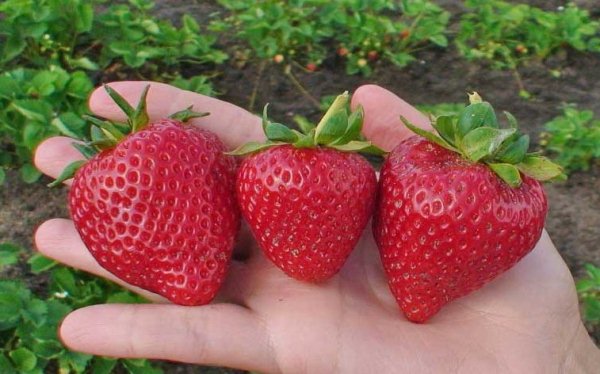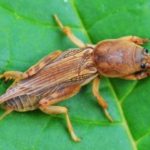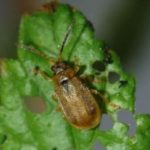Lambada strawberry belongs to early varieties and is characterized by large, juicy berries. It is practically not susceptible to diseases and tolerates thickened plantings very well., thanks to which she deserved increased attention from gardeners. A detailed description of this variety can be found below.
Table of contents
Description of a grade of strawberry Lambada
Lambada - a variety of early ripening strawberries.Its homeland is considered the Netherlands, where it was bred in 1982. It tolerates thickening of the landings very well and is capable of forming tall and open bushes in any conditions. The leaves of this variety are very large, have a bright green color. Early ripening period, not reparative plant.
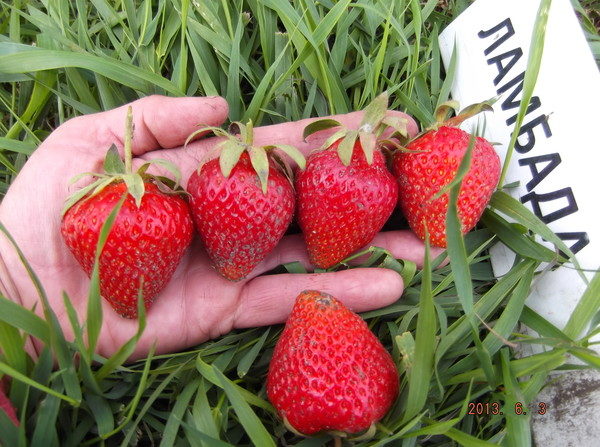
Winter hardiness in Lambad is very good, it is resistant to most of the most common diseases. But powdery mildew can affect this plant. The fruiting period for the middle band falls on the middle of May and lasts until the middle of July. The variety can easily tolerate winter without shelter, provided that the thermometer does not drop below -30 ° C. Lambada is suitable for growing in the greenhouse and in the open field.
Characteristics of berries
Berries are shaped like a cone, have a bright red color and medium size. From one bush can be collected to 2 kg harvest. The weight of one fruit on average is 20 grams. The berries are very juicy and fragrant, they are much higher in sugar content than in other varieties.
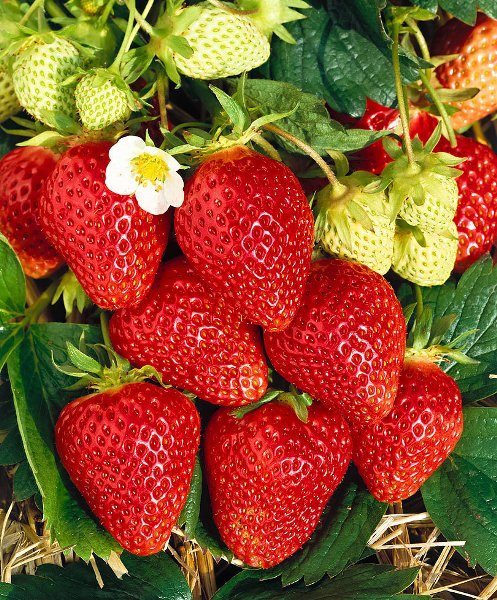
Seeds have a yellow color, they are slightly deep in the flesh.Poor transportation, not adapted for long-term storage. When transporting begins abundant juice and berries lose their presentation. The maximum yield of Lambada can be obtained by the second year of the bush’s life..
The advantages and disadvantages of the variety
At first glance, Lambada has only advantages. This can be attributed:
- increased frost resistance;
- resilience to major diseases;
- long fruiting period;
- good ones taste qualities;
- undemanding in the care;
- ability abundantly bear fruit even with thickened landings;
- universal berry prescription.
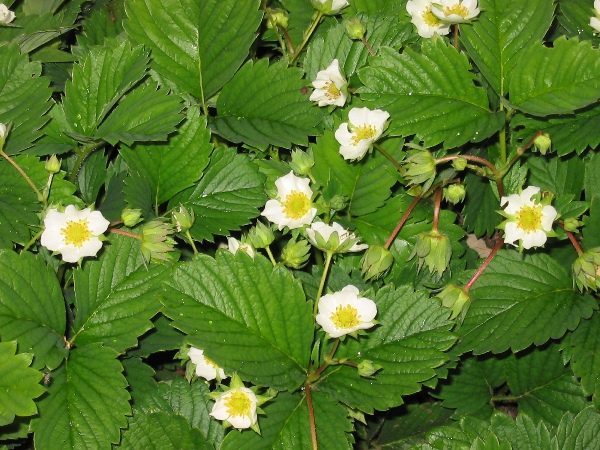
There are almost no flaws in this variety. Moreover, if the crop could be transported over long distances and stored, then Lambada would receive the title of the ideal strawberry variety. Still here worth mentioning susceptibility to powdery mildew. But the gardeners turn a blind eye to these minor issues, because there are so many more advantages.
Planting seedlings
Planting strawberries is better to produce in the soil with an average acidity. Pre-fertilized with complex fertilizers and loosened. The site should be as flat as possible and should be located in a sunny place. Landing is usually carried out in early autumn. Since young plants do not have time to take root, then they are better covered for the winter. For these purposes, suitable as sawdust and fallen leaves from garden trees, straw, etc.
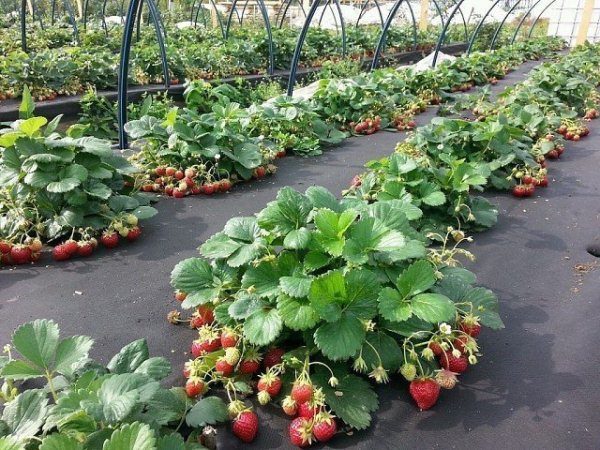
Scions with a small root system seated at a distance of about 30 centimeters from each other nesting way. The young plant is planted in the prepared hole, straighten the root system, fall asleep with soil, and then a few pull up. This is done to ensure that the growth point is on the surface. After completion of these works, the bed must be watered.
Growing points
There are certain subtleties, given that you can significantly increase the yield of strawberries in your garden.After a couple of years, plants consume a significant portion of the minerals from the soil, so they need to be replenished by applying fertilizer. Make them necessary from the calculation 0,5–1 liter per 1 bush. For young landings, a solution of mullein and ammonium is well suited. Lambada variety does not like when fertilizer is applied directly at the root.
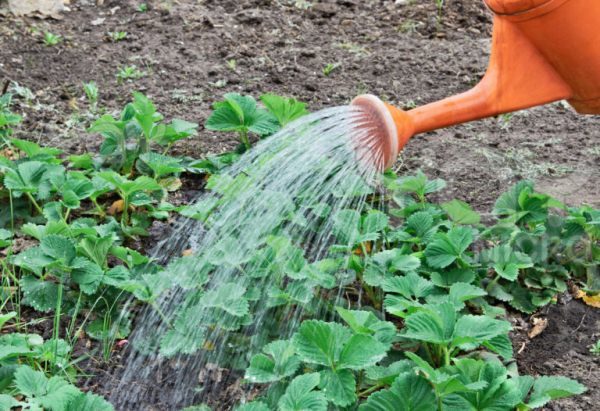
In early summer, you need to pay attention to the color of the leaves. If it has a pale shade, then in June, liquid nitrogen fertilizers are applied along with irrigation.
During the season, mustache is trimmed several times, and in the spring or after harvesting old and dry leaves are harvested.
Lambada - moisture-loving variety, so you should not allow the soil to dry out. Regular watering is required., not forgetting that excessive accumulation of moisture can lead to decay of the root system. So that the soil does not give up moisture so quickly, you can use mulching. It will also help prevent the growth of weeds.

After the last harvest and the completion of fruiting, the old and diseased leaves from the plants are cut off.Next, the bed is fertilized with complex fertilizers (suitable both mineral and organic) and treated with a solution of Bordeaux mixture.
Frost-resistant, perfectly tolerates wintering without shelter (if the frost is not more than -30 ° C). It is necessary to shelter the plants only in the first year after planting, when they have not yet sufficiently formed a root system. For these purposes, any suitable covering material that is at hand. It is best to use lapnik for these purposes.
The problems arising from the cultivation of varieties of lambada
In order to strawberry well fruited, it needs a lot of sunlight. Of course, Lambada may well grow in a small shade, but it will not be possible to get a rich harvest from it.
Too saline soil adversely affects plant growth and development.. It can not only please with tasty berries, but also perish.
Reviews of gardeners indicate that strawberry Lambada, although described as a very fruitful variety, in practice has established itself as a medium-yielding. Nobody from practicing gardeners managed to get very high rates.It may well be that this is just the result of mistakes in care or the wrong choice of land.
Breeding methods
Lambada breeds rooted rosettes. This is done in the fall, before the onset of cold weather. The variety gives a lot of whiskers with good yields, so reproduction problems never arose. Before rooting, the children are immersed in manganese solution for 15 minutes and then rinsed.
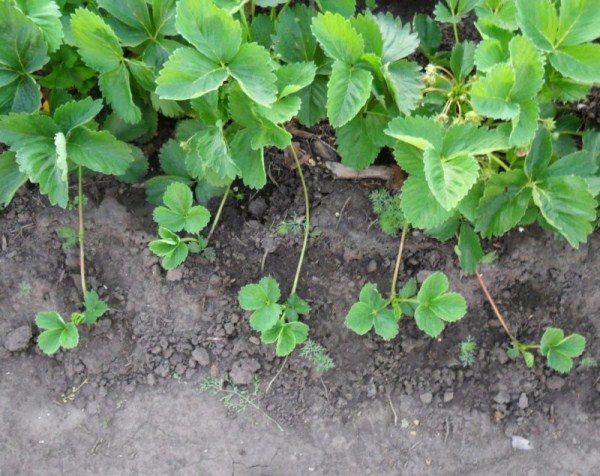
You can multiply Lambada and seeds. To do this, a very ripe berry knead with a fork and soak the pulp in water for a couple of days. As soon as the fermentation process has begun, they all filter through gauze or a fine sieve. The seeds thus collected are dried and stored until February.
In February - early March, the seeds are scattered on the preheated and sifted soil. After that, glass is placed on top and placed in a warm and bright place. After the first shoots appear, they can be swooped into separate cups.
Diseases and pests
Lambada is very resistant to typical strawberry diseases.:
- gray rot;
- heart rot;
- vertellicily wilt.
In spite of this, the variety may be affected by powdery mildew. If the disease manifested itself in the garden, then after the harvest will be harvested, the plants mow. After that, the bed is treated with fungicide, fed with a solution of boric acid (can be replaced with zinc fertilizers) and watered abundantly.
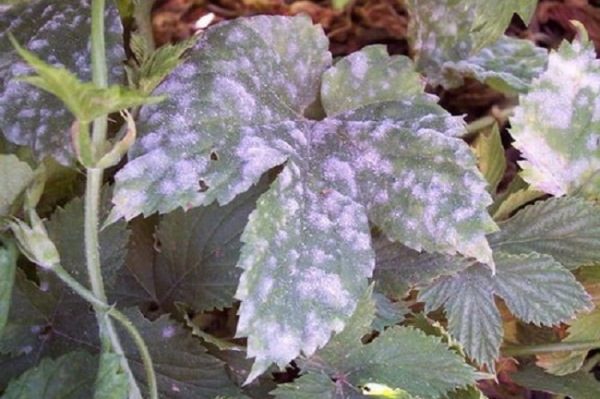
The situation with pests is somewhat worse, since tasty and fragrant strawberries can become a real delicacy for them. Landings can hit:
- strawberry leaf beetle;
- Chafer;
- Medvedka;
- strawberry mite;
- aphid;
- spider mite;
- slugs;
- thrips.
- Aphid
- Medvedka
- Strawberry damaged by strawberry mite
- Strawberry leaf beetle
- Most of all slugs damage leaves of strawberry, berries absorb entirely
With a strong defeat, each of them has its own methods of control and means for handling landings. For prophylaxis before flowering and fruiting begins, the bed is treated with a solution of copper sulphate and soap. You can add soda ash, colloidal sulfur, etc.
Lambada - a very unpretentious variety of strawberries. Growing and multiplying it is quite simple, and the taste of the berries is simply excellent.. By the way, it is for the tastes that many gardeners give her preference. The disadvantage is that the crop does not tolerate transportation and quickly loses its commercial quality.
